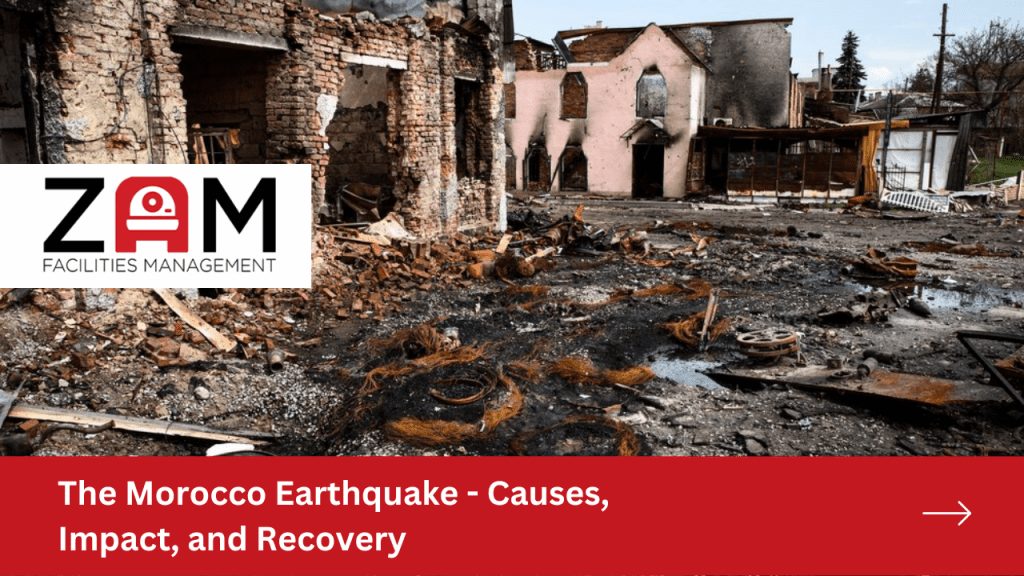In a tragic turn of events, Morocco was thrust into the spotlight when a powerful magnitude 7 earthquake struck the province of Al-Haouz. This seismic disaster left a trail of destruction, loss of lives, and enduring challenges for the affected region. In this comprehensive blog, we’ll delve into the causes of this earthquake, the location of its source, and the devastating aftermath it unleashed on Morocco.
Blog Outline
ToggleUnderstanding Earthquake Sources
Before we delve into the specifics of this catastrophic event, let’s first comprehend the geological backdrop:
Tectonic Plates
Earth’s crust is divided into enormous plates known as tectonic plates. Morocco rests at the convergence of two major plates: the African Plate and the Eurasian Plate. Most seismic activity in Morocco is concentrated in the northern part of the country, near the boundary of these plates, particularly around the Strait of Gibraltar.
Fault Lines
The Atlas Mountains, a mountainous region of Morocco, feature significant fault lines that have developed over thousands, or even hundreds of thousands, of years. These geological structures are potential sources of earthquakes

Why Did It Happen?
Now, let’s explore why this earthquake occurred in a region not typically associated with such significant seismic activity
Fault Length
The length of the faultline associated with the Moroccan earthquake was approximately 30 kilometers. In contrast, the earthquake in Turkey and Syria in February had a faultline that stretched 300 kilometres. The shorter faultline in Morocco meant that the energy released underground was less significant, resulting in a more localized impact.
Assessing the Devastation
The aftermath of the Morocco earthquake was characterized by widespread destruction:
Structural Devastation
Numerous buildings, including homes, schools, and businesses, were severely damaged or reduced to rubble. The absence of earthquake-resistant infrastructure exacerbated the destruction.
Infrastructure Disruption
Vital transportation routes, such as roads and bridges, were rendered impassable, hampering rescue and relief operations and isolating affected communities.
Utility Outages
Essential services, including water supply and electricity, suffered disruptions, intensifying the challenges faced by survivors.

Loss of Lives
The earthquake claimed the lives of more than 2,000 people. The impact rippled through families and communities, leaving immeasurable grief in its wake. Many survivors were left injured, displaced, or traumatized.
Search and Rescue
Dedicated search and rescue teams worked tirelessly to locate and extract survivors trapped beneath the debris. Challenging conditions and the race against time often impeded their heroic efforts.
Recovery and Rebuilding
Affected communities face the daunting task of rebuilding their lives from scratch. This involves not only the physical reconstruction of infrastructure but also addressing the emotional and psychological scars left by the disaster.
Conclusion
The Morocco earthquake of magnitude 7, which struck the province of Al-Haouz and the Atlas Mountains region, left behind a landscape of devastation and despair. The extensive damages and loss of lives serve as a stark reminder of the unpredictable and destructive power of earthquakes. As affected communities embark on the formidable journey of recovery and rebuilding, it is paramount for local and international efforts to provide unwavering support, assistance, and resources to help them heal and reconstruct their lives. In doing so, we honor the resilience and spirit of those who have endured and strive to mitigate the impact of future seismic events.
*The images and visuals in this article are not our property. All rights reserved by their respective owners. We have made every effort to identify and credit the copyright holders. If you believe an image has been used without proper attribution, don’t hesitate to contact us; we will take appropriate action.*
